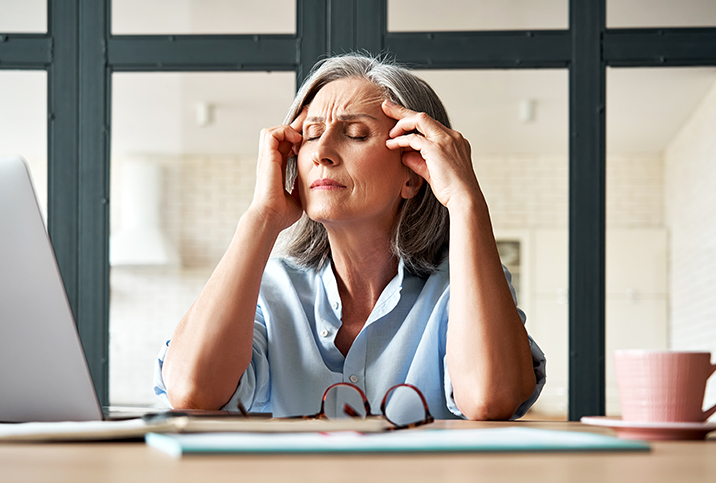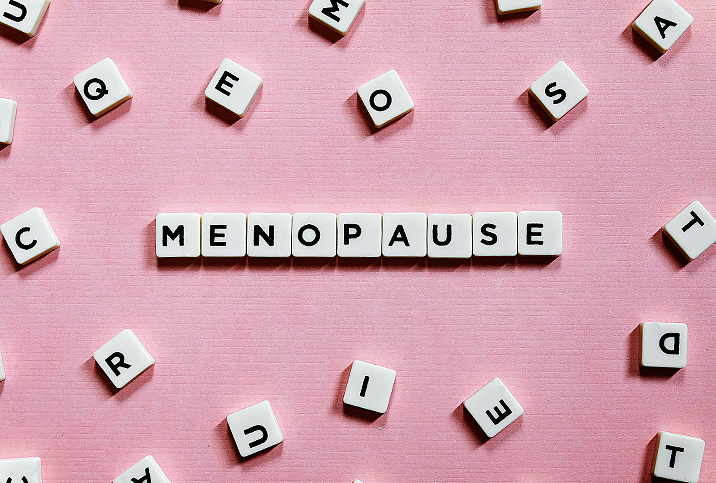How Tech Is Making Menopause a No-Sweat Lifestage

After decades of being shunned, menopause—the vaginal dryness, the mood swings, the all of it—is stepping into the spotlight. Shapewear promises to make "menopause belly" go buh-bye. A new collection of menopause-wellness products called Womaness can be found in Target stores coast to coast. Heck, even goddess Michelle Obama used her podcast to open up about how "everything started melting" when hot flashes hit.
And, at long last, tech is taking on this lifestage's most disruptive symptoms. Silicon Valley's cold shoulder towards menopause can be attributed to the fact that "tech startups have been disproportionately led by millennial men who only innovate in areas that interest them," said futurist Tracey Follows, CEO of Futuremade brand consultancy and author of "The Future of You." Now, "Gen X women are taking leadership positions, and they are often going through menopause," she explained—so they realize the tremendous opportunity that awaits. With more than a billion women globally projected to be postmenopausal in 2025, there's a $600 billion market just ready to be tapped, according to data from early-stage investing firm Female Founders Fund.
What's more, the COVID-19 pandemic has—silver-lining alert—taught (or possibly forced) many people to embrace techified wellness; step-counting apps and Zoom calls with doctors have become no big deal. Menopausal women are just as ready as anyone to use these tools: An astounding 93 percent of them are looking for noninvasive fixes, like apps, according to a 2020 survey by AARP. These "smart" solutions are ready to deliver.
Virtual visits for menopause care
One of the biggest issues for menopausal women is getting something more than a shrug from their healthcare practitioner. Only 20 percent of OB-GYN residency programs provide any kind of menopause training, according to a 2018 survey by AARP. It's no shock that the same survey found a whopping 75 percent of women seeking medical help for their symptoms don't get relief.
"Traditional medicine treats a menopausal woman as an invisible woman," Follows said. "The symptoms are not taken seriously, and general practitioners' advice is sterile and unhelpful."
One company looking to change that: Gennev, which offers menopause telehealth services as well as symptom-easing products. The virtual appointments connect women with highly trained menopause specialists—both healthcare providers and coaches—for one-on-one counseling. According to Gennev, women can get advice on managing hot flashes, weight gain, sleep problems, mood swings and more, as well as prescriptions for any medications needed.
Fighting hot flashes
Tech is also taking on one of menopause's most common and despised symptoms: hot flashes. More than 80 percent of women experience them, a 2019 scientific review published in the Journal of Mid-Life Health found, whether it's a brief flickering of warmth or a sheet-soaking overnight rager.
In the too recent past, many so-called solutions were gimmicky: stay-cool pajamas emblazoned with "Warning: Menopause. Approach with caution"? Shudder. The fresh crop of tech tools are sleek and chic—more like a Fitbit than a strap-on personal fan. One such device: Thermaband, which uses thermoregulation technology to anticipate and short-circuit what the creators describe as "personal infernos"; the wristband aims to deliver pulse-point cooling to chill the inner wrist, which can improve a person's overall sense of comfort—a possible solution for women grappling with hot flashes.
Limiting bladder leaks
Bladder leaks triggered by sneezing, laughing and exercise are another major WTF menopause symptom. These accidents happen because less estrogen production means thinner, less resilient tissues in the bladder and pelvis; they just don't hold back the fluid the way they used to.
There are aisles full of pads and disposable undergarments to tackle this issue, but how about stopping the leak before it starts? The vFit device looks like a sex toy, but when you insert it into the vagina, its combo of low-level red light, warmth and vibrations increases blood flow and cellular health while toning the pelvic floor. When used every other day for about 10 minutes over two months, the device is meant to enhance pelvic muscles and bladder control, minimizing those "oops" moments.
Say 'Yes' to hotter sex
As estrogen production plummets during menopause, the vaginal tissues thin out and lose lubrication. (The scary medical term: vaginal atrophy.) This scenario typically leads to painful intercourse and can contribute to urinary issues. While hormone replacement therapy (HRT) alleviates this, it's not considered a safe option for some women, especially those with breast cancer in their personal or family history.
The Madorra device, currently wending its way through approval by the Food and Drug Administration, promises to reduce vaginal dryness in women who want or need to avoid hormones. The handheld device delivers therapeutic ultrasound treatment to the exterior of the vagina, increasing blood flow to the internal tissues. Used for several minutes a day, this therapy boosts lubrication, thereby taking the sting out of intercourse.
These solutions promise a much easier menopause for most women—and a huge uptick in personal agency.
"Tech tools put your health into your hands, identifying and tracking your symptoms, looking for patterns, and collecting data you can share with others," Follows said.
As inventive minds hatch new innovations, the days of sweating out menopause's symptoms while feeling alone and misunderstood may be over.

















